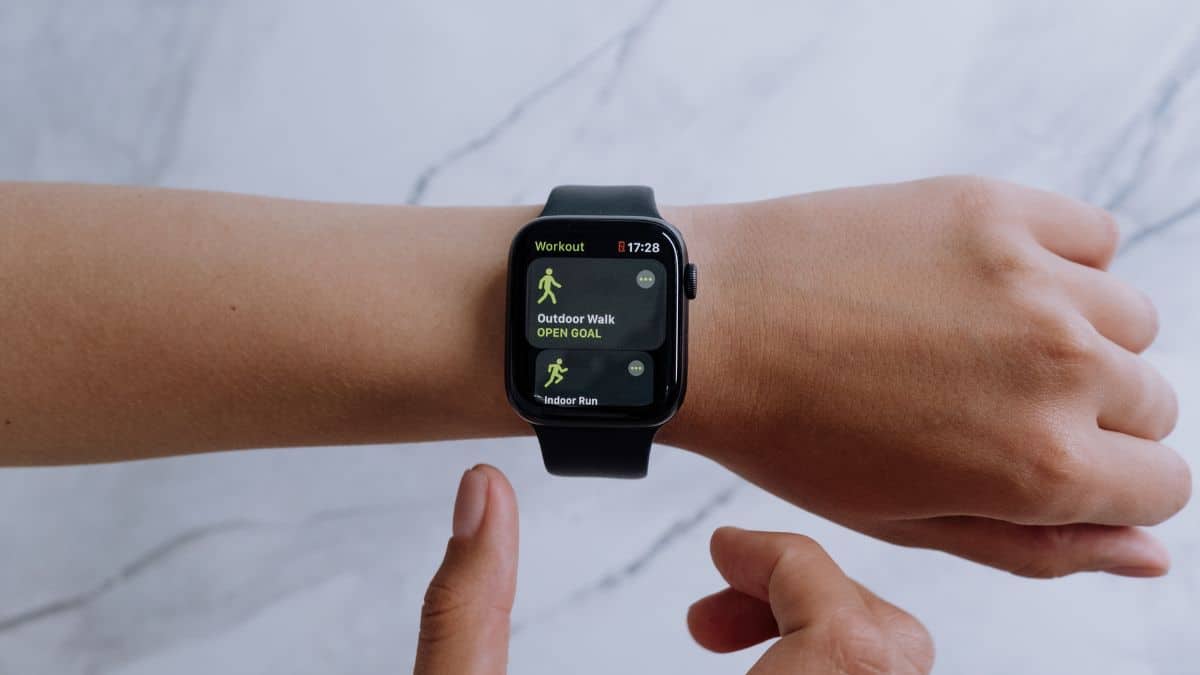If you’ve been tossing and turning at night, blaming stress, caffeine, or a poor mattress, there’s a silent partner that can finally give you answers: your smartwatch. When used correctly, smartwatch sleep tracking can help you uncover the real reason you’re not getting quality rest—and fix it.
From heart rate patterns to sleep cycles, a smartwatch acts like a sleep coach on your wrist. You’ll finally have data to back your tired mornings—and the tools to do something about it.
⏱️ How Smartwatch Sleep Tracking Works
Most modern smartwatches use sensors to monitor:
- Heart rate variability (HRV)
- Blood oxygen saturation (SpO2)
- Movement patterns
- Sleep stage estimation (light, deep, REM)
By wearing the watch to bed, your body tells a story through numbers. This story gives you actionable feedback on what’s ruining your recovery—whether it’s a 2 a.m. wake-up or racing heart rate due to stress.
✅ Top-Rated Smartwatch with Sleep Tracking – Amazon
🧮 The Sleep Math: What You’re Missing
Sleep isn’t just hours in bed. It’s about quality and stage balance. Here’s the math breakdown:
| Stage | Ideal % | Function |
|---|---|---|
| Light | 50–60% | Transition and prep |
| Deep | 15–20% | Physical repair & hormones |
| REM | 20–25% | Memory, focus, emotions |
If your smartwatch shows 5 hours of sleep but only 10% deep, your body missed its repair window. That’s like skipping recovery days in the gym—except worse.
📉 Signs You’re Not Getting Enough Quality Sleep
Even if you “slept 7 hours,” you may still be tired. Here’s what smartwatch sleep tracking might expose:
- Frequent wake-ups
- Low REM (less than 1.5 hours)
- Elevated resting heart rate (>60 bpm)
- Poor HRV (<40 ms)
✅ Sleep Tracker App Compatible with All Watches – Amazon
Why it matters: Your central nervous system resets during deep sleep. If that cycle is broken, your cortisol, blood sugar, and energy suffer the next day.
🧠 Why Sleep Data Beats Guessing
Without tracking, you’re guessing. And your guess is usually wrong. You can’t fix what you can’t measure.
Examples from smartwatch sleep tracking:
- Night sweats? Your SpO2 dropped—possible sleep apnea
- 2:30 a.m. wake-ups? Cortisol spike from a carb crash
- Flatline REM? Blue light and caffeine too late
Tracking lets you test changes—like no screens after 9 p.m.—and see the results the next morning.
📲 The Power of Feedback Loops
Terry Clark’s method always comes back to behavior + data = results. Smartwatch sleep tracking gives you the data to correct sleep-destroying behaviors.
- Cut caffeine after noon → HRV improves
- Eat protein at dinner → Less nighttime wake-ups
- Meditate 10 minutes → REM increases by 15%
✅ Smartwatch Charging Dock – Amazon
Tip: Keep your smartwatch charged during the day so it tracks sleep without interruption overnight.
🛌 How to Set Up Your Smartwatch for Sleep Success
1. Wear it snug, but not tight
Too loose = inaccurate data. Too tight = discomfort.
2. Enable “Sleep Mode”
It dims the screen and disables alerts.
3. Sync with a sleep tracking app
Choose one that shows trends, like sleep score, HRV, or oxygen levels.
4. Track for 7–14 days
You need trends—not just one bad night—to identify patterns.
❓FAQs – Smartwatch Sleep Tracking
Q: Is wearing a smartwatch to bed safe?
A: Yes. The low-level radiation is non-ionizing and far below any harmful level. Millions use them nightly with no risk.
Q: Does it help with insomnia?
A: It can. By identifying what disrupts your sleep (heart rate spikes, restlessness), you can take action.
Q: What’s more important: duration or quality?
A: Quality. Six hours of deep + REM sleep can outperform eight hours of shallow, interrupted rest.
🔄 Sample Behavior Tracking Plan
| Habit Change | Metric to Watch | Ideal Outcome |
|---|---|---|
| No screens after 9pm | REM Sleep | +20% within 7 days |
| Walk after dinner | Resting Heart Rate | Drop below 60 bpm |
| High-protein dinner | Wake-ups per night | Fewer than 1 |
| Breathing exercise | HRV | Over 50ms average |
This is where the math meets the mindset.
🔑 Key Takeaways
- Smartwatch sleep tracking reveals the truth behind fatigue, stress, and poor recovery
- You can measure heart rate, sleep stages, and nightly trends to fix what’s broken
- Behavior + feedback = better results in sleep and fitness
- Sleep quality, not just quantity, predicts your health and energy outcomes
Join the Faith & Fitness Family
Subscribe now and get exclusive access to Bible-based fitness content and more!
Bonus: iPhone users get a 14-day free trial of our Faith & Fit workout app!
📩 Important: Please confirm your subscription within 7 days. Unconfirmed emails will be removed to help prevent spam and ensure we only send content to those who want it.
👉 Stay strong in faith and fitness — subscribe today!






